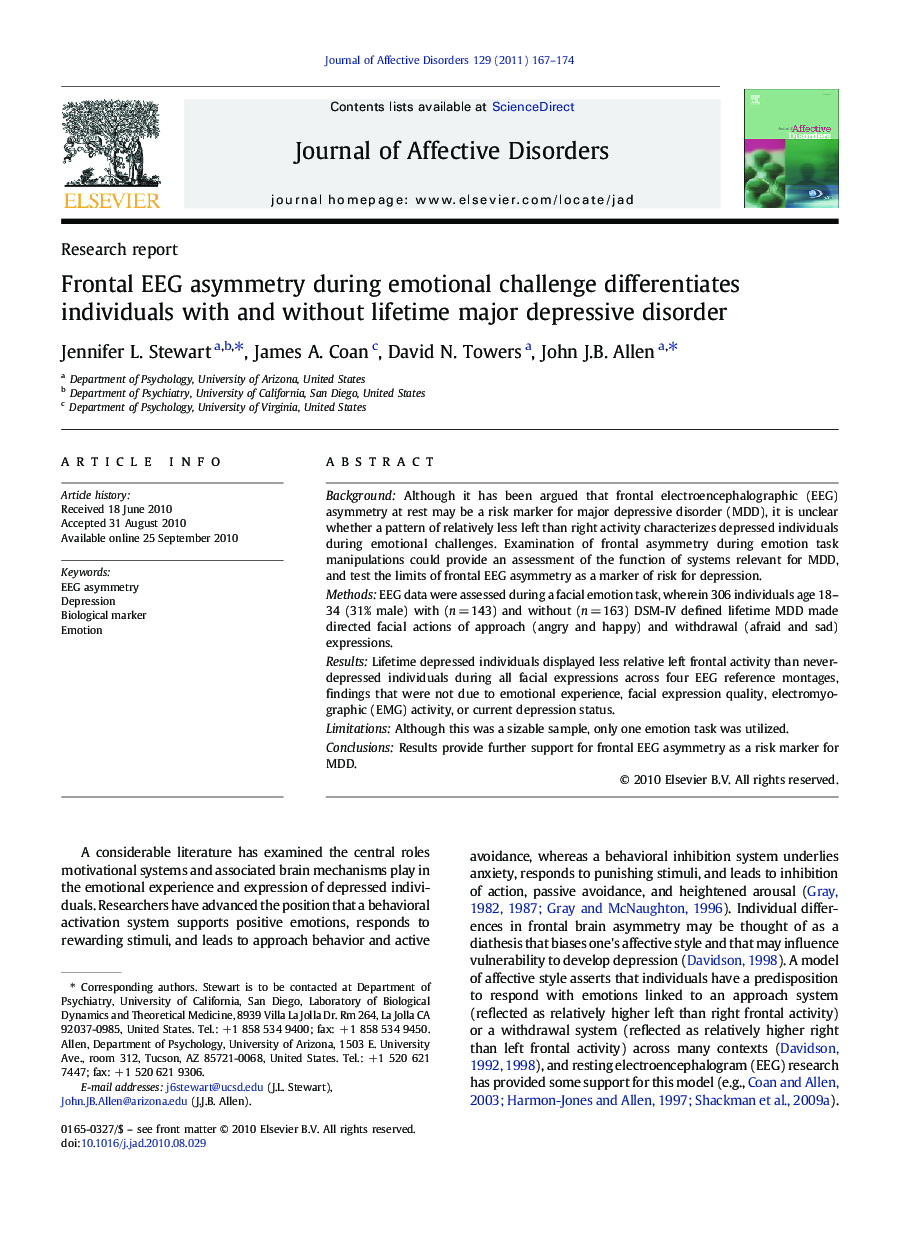| Article ID | Journal | Published Year | Pages | File Type |
|---|---|---|---|---|
| 4186520 | Journal of Affective Disorders | 2011 | 8 Pages |
BackgroundAlthough it has been argued that frontal electroencephalographic (EEG) asymmetry at rest may be a risk marker for major depressive disorder (MDD), it is unclear whether a pattern of relatively less left than right activity characterizes depressed individuals during emotional challenges. Examination of frontal asymmetry during emotion task manipulations could provide an assessment of the function of systems relevant for MDD, and test the limits of frontal EEG asymmetry as a marker of risk for depression.MethodsEEG data were assessed during a facial emotion task, wherein 306 individuals age 18–34 (31% male) with (n = 143) and without (n = 163) DSM-IV defined lifetime MDD made directed facial actions of approach (angry and happy) and withdrawal (afraid and sad) expressions.ResultsLifetime depressed individuals displayed less relative left frontal activity than never-depressed individuals during all facial expressions across four EEG reference montages, findings that were not due to emotional experience, facial expression quality, electromyographic (EMG) activity, or current depression status.LimitationsAlthough this was a sizable sample, only one emotion task was utilized.ConclusionsResults provide further support for frontal EEG asymmetry as a risk marker for MDD.
